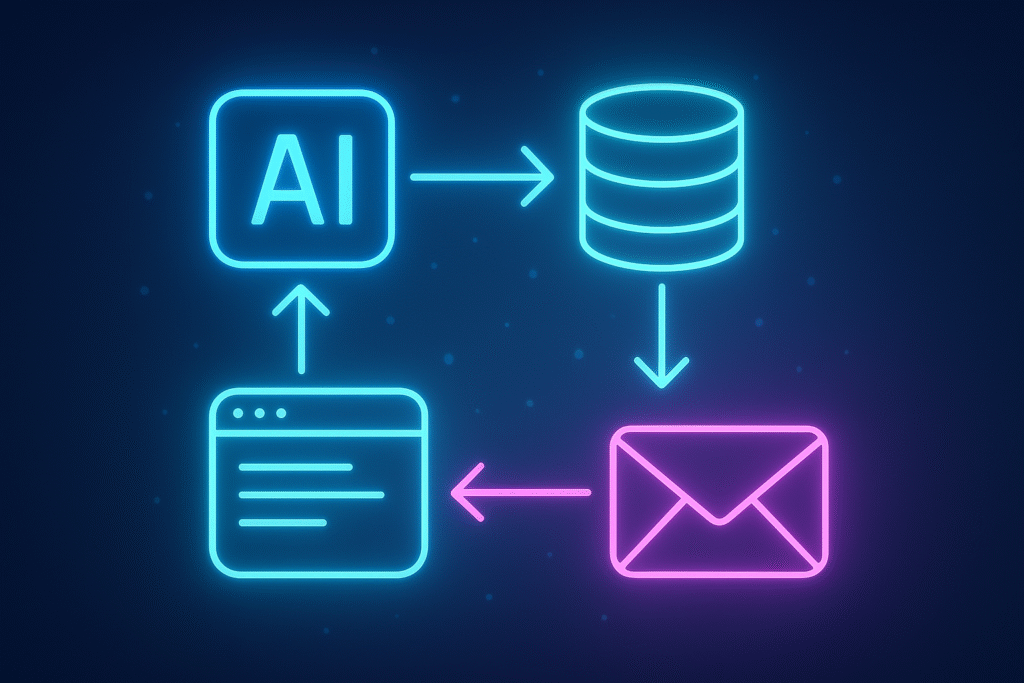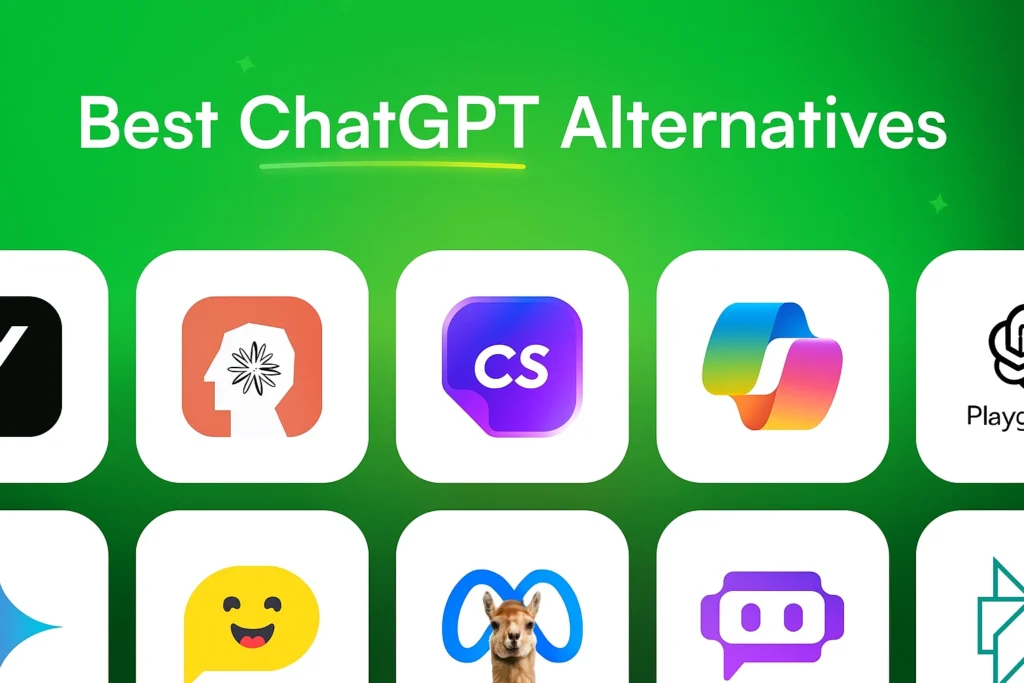A few years ago, my mornings all started the same way: with a large coffee and a spreadsheet. I was running a small digital marketing agency, and while I was passionate about helping clients grow, a huge portion of my day was spent on a task I dreaded: manual lead generation. It was a slow, repetitive process that was capping my business’s growth. I knew there had to be a more efficient way to find potential clients.
This is the story of how I identified that bottleneck and built an automated system using no-code tools and AI to solve it. This single workflow not only saved me over 10 hours a week but also transformed my outreach efforts from a manual chore into a streamlined, scalable machine. It was a process of trial and error, but the results were a game-changer for my business.
The problem: Inefficient and time-Consuming lead generation
My agency specializes in local search engine optimization (SEO) for service-based businesses like plumbers, electricians, and landscapers. These businesses get immense value from ranking high on Google Maps, but many don’t have the time or expertise to manage it themselves. The market was there, but reaching it was my biggest challenge.
My daily process for finding new leads looked like this:
- Manual searching: I would spend about two hours every morning searching Google and online directories for businesses in specific cities and niches (e.g., “HVAC repair in Denver”).
- Manual vetting: For each potential lead, I’d visit their website and do a quick, manual audit. Did they have a “Google Business Profile”? Was their website mobile-friendly? Was their contact information easy to find? This helped me gauge if they were a good fit for my services.
- Data entry: I would copy and paste the business name, website, and contact details into a growing and messy spreadsheet.
- Personalized outreach: Finally, I’d draft and send individual emails, trying to personalize each one so it didn’t sound like generic spam.
This entire workflow was a bottleneck. I could only realistically process about 10 prospects a day. It was exhausting, mind-numbingly repetitive, and not scalable. If I wanted to grow my agency, I couldn’t be spending half my day as a data entry clerk. This was the specific problem I set out to solve.
The solution: An automated workflow
My goal was to create a hands-off system that could replicate my manual process but at a much larger scale and speed. I wanted a machine that could find prospects, vet them for me, and even help prepare the outreach.
After researching no-code automation platforms, like n8n and Zapier, I decided to use Make.com (formerly Integromat) as the central hub for my workflow. Its visual interface made it easy to map out the steps and see how data would flow between different applications. I also needed an AI component to handle the “vetting” part, and chatGPT was the perfect tool for that.
I broke down my manual process into a series of automated steps.
Here is the exact workflow I built
Step 1: Finding leads automatically
The first task was to automate the search process. I needed a way to gather a list of potential businesses without manually searching Google.
- Tool used: A web scraping service (I used Bright Data, but others like Apify also work well).
- How it worked: I configured the web scraper to perform a targeted search on a major online business directory. I could set the parameters, such as “Plumbers in Phoenix, Arizona.” The scraper would then extract the business name, website URL, and contact email for every result and add this data as a new row in a dedicated Google Sheet. This alone replaced my two hours of daily searching.
Step 2: Qualifying leads with an AI Agent
This was the most critical part of the automation. I needed to teach a machine how to “think” like I did when I vetted a potential client.
- Tools used: Make.com, Google Sheets, and OpenAI (GPT).
- How it worked: I created a scenario in Make.com that would trigger every time a new row was added to the Google Sheet from the web scraper.
- The workflow would take the website URL from the new row.
- It would send that URL to the OpenAI GPT API with a very specific prompt. This prompt was the “brain” of my operation.
My prompt looked something like this:
“You are an expert local SEO analyst. Please review the business website at [Website URL]. Based on the website’s content and structure, determine if this business is a good candidate for local SEO services. Specifically, check for the following: a weak or missing Google Business Profile, poor mobile optimization, slow page speed, or a lack of location-specific keywords. Conclude your analysis with a simple ‘YES’ or ‘NO’ to indicate if they are a good fit, followed by a one-sentence summary explaining your reason.”
The AI would analyze the website in seconds and return an answer like: “YES – The website is not mobile-friendly and has no clear calls-to-action for local customers.”
Step 3: Sorting and preparing for outreach
Now that the AI had qualified the lead, the workflow needed to take action based on the response.
- Tool used: The “Router” module in Make.com.
- How it worked: The router would split the workflow into two paths based on the AI’s “YES” or “NO” answer.
- “YES” Path: If the AI determined the lead was a good fit, the business’s information was automatically sent to my CRM (I used a simple Airtable base for this) and added to a “Qualified Leads” list. The workflow would also take the AI’s one-sentence reason and use it to help draft a personalized opening line for an email. For example: “I noticed your website wasn’t displaying correctly on mobile devices…”
- “NO” Path: If the lead was not a fit, their information was moved to a separate tab in my Google Sheet labeled “Disqualified.” This kept my main list clean but preserved the data in case I wanted to review it later.
The results: Efficiency and growth
The impact of this automated system was immediate and significant.
- Time saved: The workflow completely eliminated the 10-12 hours per week I was spending on manual prospecting and data entry. My mornings were now free to focus on client strategy and business development.
- Increased volume: Instead of processing 10 prospects a day, the system could analyze hundreds overnight. I would wake up to a fresh list of 50-100 highly qualified leads waiting in my CRM.
- Higher quality outreach: Because the AI provided a specific pain point for each lead, my outreach emails became far more relevant and effective. My response rate more than doubled because I was starting conversations by addressing a real problem.
- Business growth: Within three months of implementing this system, my agency had onboarded five new clients who came directly from this automated funnel. The system paid for itself in the first month.
Challenges faced and lessons learned
The journey wasn’t without its difficulties. My first few attempts were clumsy. I had issues with the web scraper being blocked, and my initial AI prompts were too vague, leading to unreliable “YES” or “NO” answers.
Here are the key lessons I learned:
- Be Hyper-Specific with AI Prompts: The quality of the AI’s output is directly related to the quality of your prompt. I had to refine my prompt multiple times, adding specific criteria to guide the AI’s analysis.
- Start simple and iterate: My first version of the workflow just sorted leads into “YES” or “NO.” I later added the automated email drafting and CRM integration. Starting with a Minimum Viable Product (MVP) and building on it is far more effective than trying to build a perfect, complex system from day one.
- Monitor and refine: Automated systems need supervision. I check the workflow’s logs weekly to ensure everything is running smoothly and to look for opportunities to improve it.
This experience taught me that automation isn’t about replacing human effort, it’s about augmenting it. By handing over the repetitive, low-value tasks to a machine, I was able to focus my energy on the creative, strategic work that truly drives business growth.

